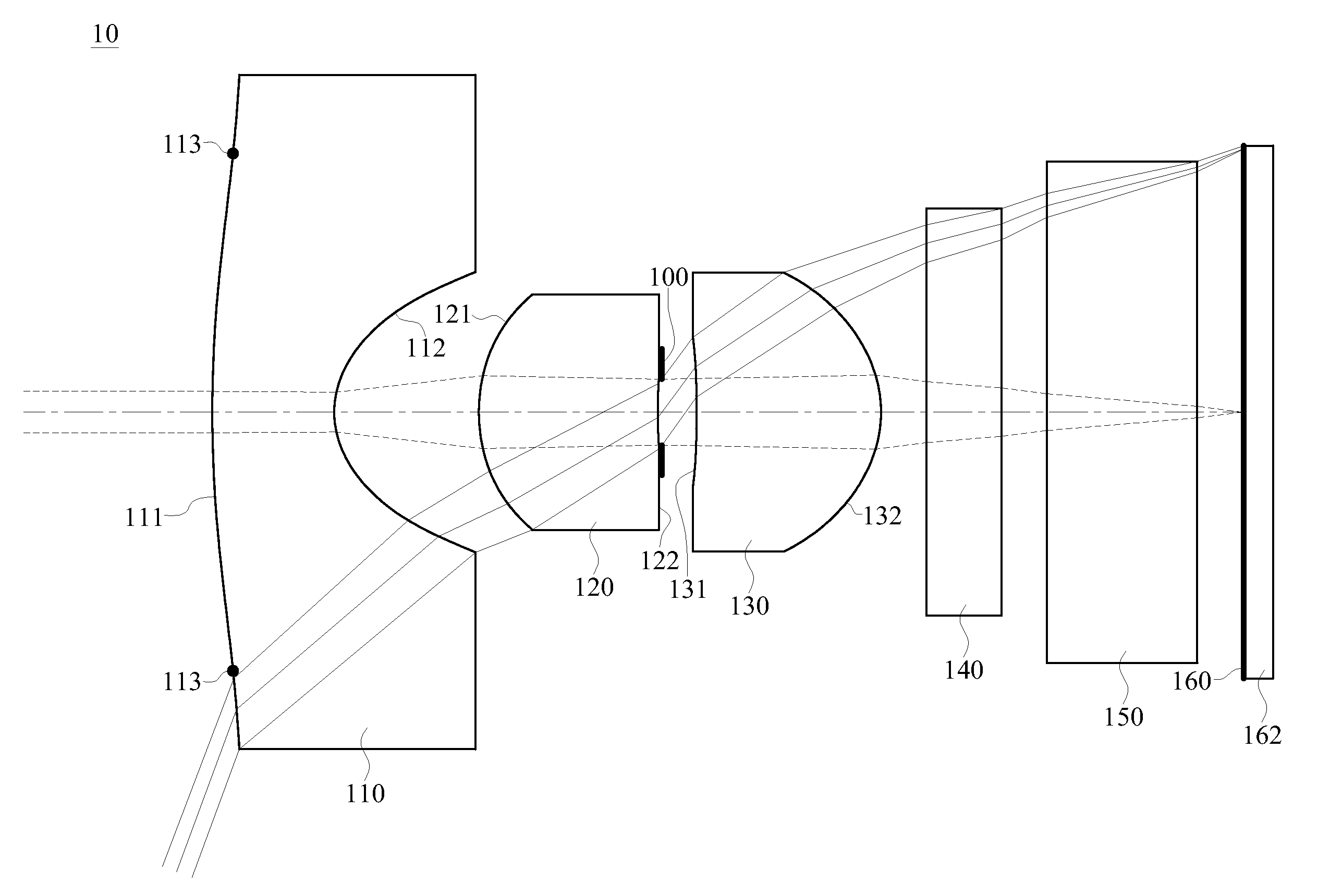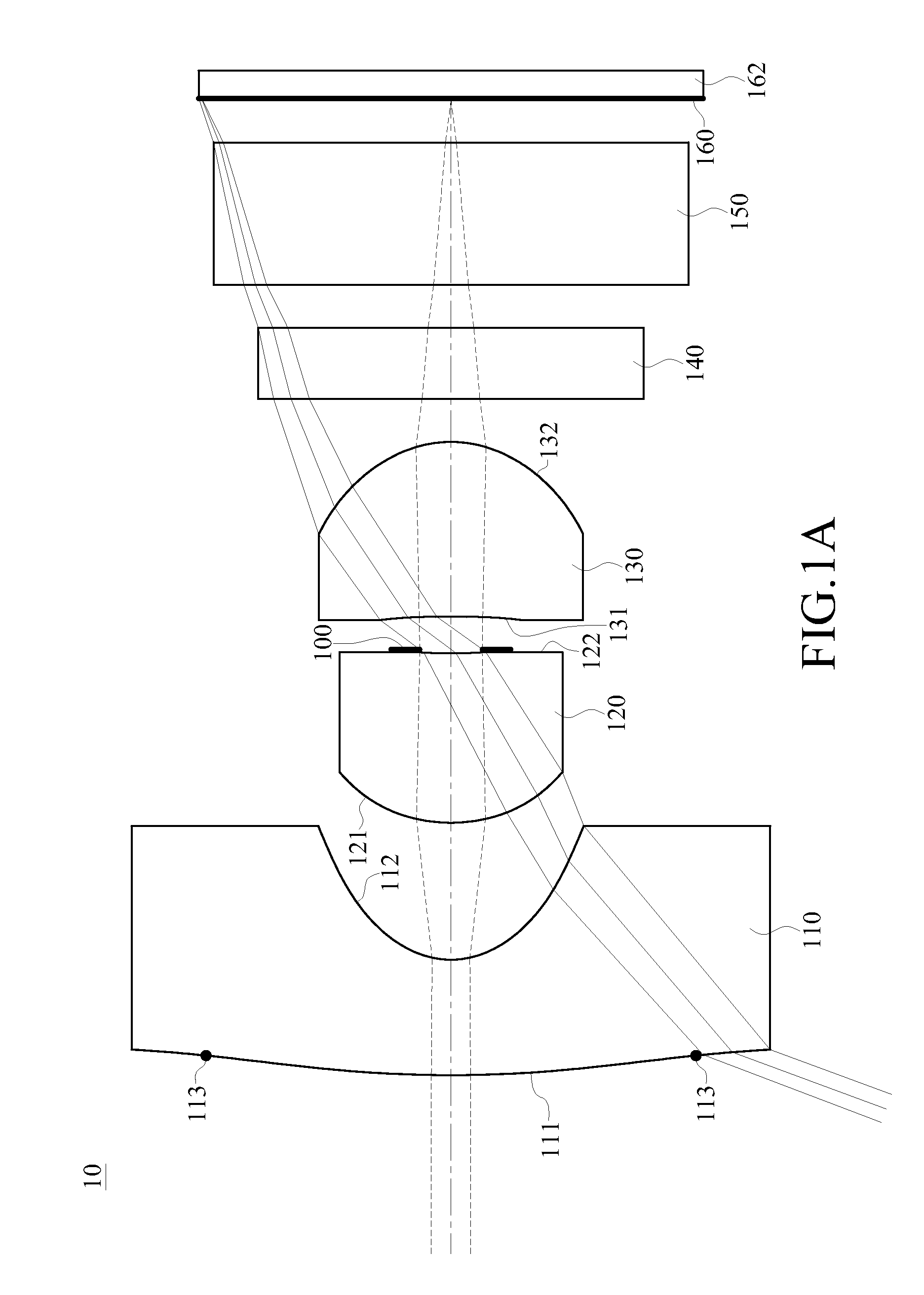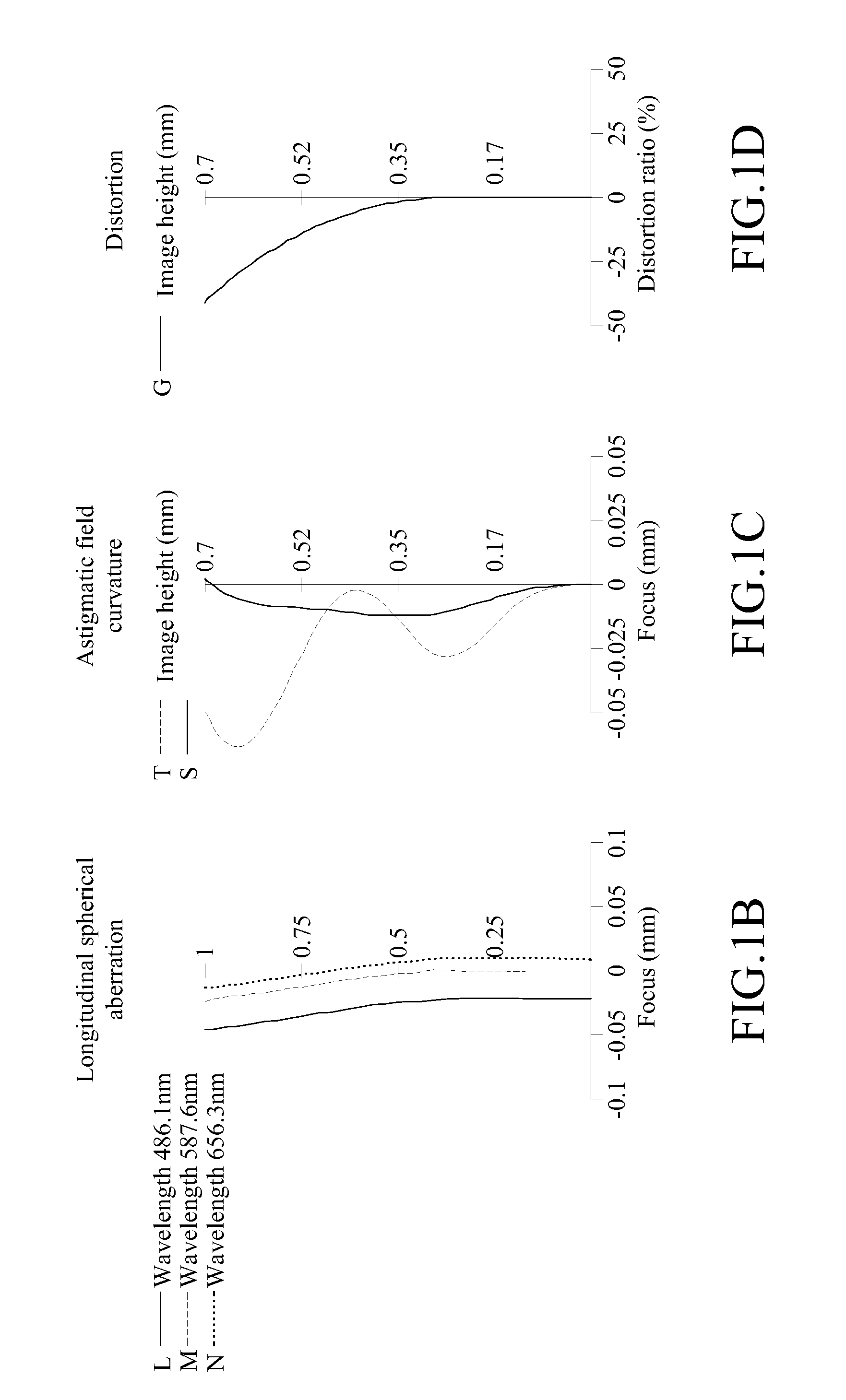Wide viewing angle optical lens assembly
- Summary
- Abstract
- Description
- Claims
- Application Information
AI Technical Summary
Benefits of technology
Problems solved by technology
Method used
Image
Examples
first embodiment
The First Embodiment
Embodiment 1
[0076]FIG. 1A is a schematic structural view of a first embodiment of a wide viewing angle optical lens assembly according to the present invention. In this embodiment, for example, the wavelength of the light received by the wide viewing angle optical lens assembly 10 is 587.6 nm, but the wavelength of the light received by the wide viewing angle optical lens assembly 10 may be adjusted according to actual requirements, and is not limited to the wavelength value mentioned above.
[0077]According to this embodiment of the present invention, the first lens element 110 has the negative refractive power, the second lens element 120 has the positive refractive power, and the third lens element 130 has the positive refractive power. Wherein, the object-side surface 111 of the first lens element 110 is convex and there are two inflection points 113 on the object-side surface 111 of the first lens element 110. The image-side surface 112 of the first lens eleme...
second embodiment
The Second Embodiment
Embodiment 2
[0089]FIG. 2A is a schematic structural view of a second embodiment of the wide viewing angle optical lens assembly according to the present invention. The specific implementation is substantially the same as that in the first embodiment, and the elements in the second embodiment are the same as those in the first embodiment, so that the element symbols all begin with “2” as the hundredth digit, which represents that the elements have the same function or structure. For sake of conciseness, only the differences are illustrated below, and the similar parts will not be repeated herein.
[0090]In this embodiment, for example, the wavelength of the light received by a wide viewing angle optical lens assembly 20 is 587.6 nm, but the wavelength of the light received by the wide viewing angle optical lens assembly 20 may be adjusted according to actual requirements, and is not limited to the wavelength value mentioned above.
[0091]According to this embodiment ...
third embodiment
The Third Embodiment
Embodiment 3
[0098]FIG. 3A is a schematic structural view of a third embodiment of the wide viewing angle optical lens assembly according to the present invention. The specific implementation is substantially the same as that in the first embodiment, and the elements in the third embodiment are the same as those in the first embodiment, so that the element symbols all begin with “3” as the hundredth digit, which represents that the elements have the same function or structure. For sake of conciseness, only the differences are illustrated below, and the similar parts will not be repeated herein.
[0099]In this embodiment, for example, the wavelength of the light received by the wide viewing angle optical lens assembly 30 is 587.6 nm, but the wavelength of the light received by the wide viewing angle optical lens assembly 30 may be adjusted according to actual requirements, and is not limited to the wavelength value mentioned above.
[0100]According to this embodiment o...
PUM
 Login to View More
Login to View More Abstract
Description
Claims
Application Information
 Login to View More
Login to View More - R&D
- Intellectual Property
- Life Sciences
- Materials
- Tech Scout
- Unparalleled Data Quality
- Higher Quality Content
- 60% Fewer Hallucinations
Browse by: Latest US Patents, China's latest patents, Technical Efficacy Thesaurus, Application Domain, Technology Topic, Popular Technical Reports.
© 2025 PatSnap. All rights reserved.Legal|Privacy policy|Modern Slavery Act Transparency Statement|Sitemap|About US| Contact US: help@patsnap.com



